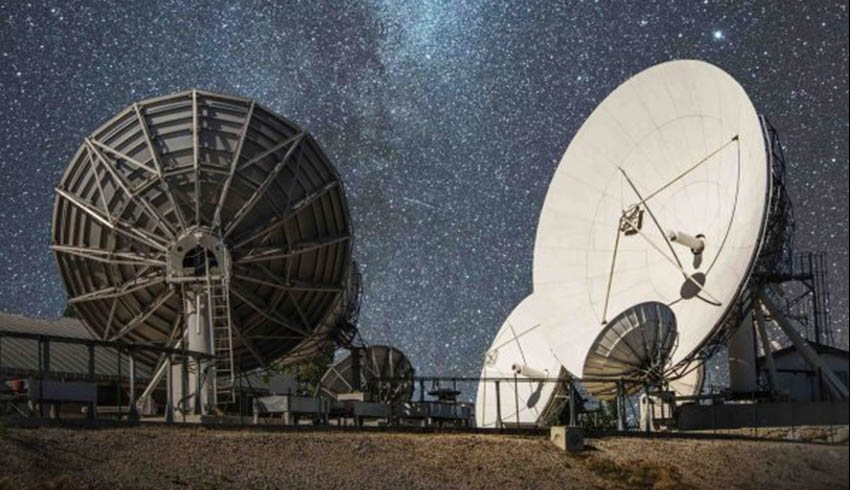In what’s been the most comprehensive search for extraterrestrial intelligence (SETI), the Breakthrough Listen science team at the University of California, Berkeley, SETI Research Center (DSRC) used data from the CSIRO Parkes Radio Telescope in central NSW and the Green Bank Radio Telescope (GBT) in West Virginia, USA.
They conducted detailed observations of a sample of 1,702 nearby stars within about 160 light years of Earth, looking for what are termed “technosignatures” – evidence of technology such as transmitters or propulsion devices built by alien civilisations.
Their findings have now been released in a pair of papers submitted to leading astrophysics journals.
Dr Danny Price, radio astronomer for the Breakthrough Listen project at Parkes Radio Telescope said this data release was a tremendous milestone for the Breakthrough Listen team.
“We scoured thousands of hours of observations of nearby stars, across billions of frequency channels. We found no evidence of artificial signals from beyond Earth, but this doesn't mean there isn't intelligent life out there. We may just not have looked in the right place yet, or peered deep enough to detect faint signals,” he said.
Breakthrough Listen scientists liken their search to the hunt for a needle in a haystack, scanning for signals that are too narrow and well-defined to result from natural processes.
Most of what’s detected is determined to originate with human technology. The team applies various filters, firstly selecting only narrow band signals drifting in frequency due to Doppler shift. The second filter removes signals that do not appear to originate from a fixed point on the sky.
By performing comparison scans of regions of sky near to the star being targeted, signals not coming from the direction of the target star can be removed.
This reduces the haystack down to a just a handful of signals, none of which have been judged to have been of alien origin.
Breakthrough Listen isn’t giving up. It’s now ready to extend the search to higher frequencies, more signal types and many more stars.
Observations of a 1 million star sample will soon start at the MeerKAT telescope in South Africa. The Automated Planet Finder at the Lick Observatory in California is being used to search for optical signals.
As well as the two new scientific papers, Breakthrough Listen has also released all its data sets.
Matt Lebofsky, BSRC lead system administrator, said it had made data available previously in smaller subsets.
“We are excited and proud to offer this first cohesive collection along with an instruction manual, so everybody can dig in and help us search. And we’re just getting started – there’s much more to come,” he said.

